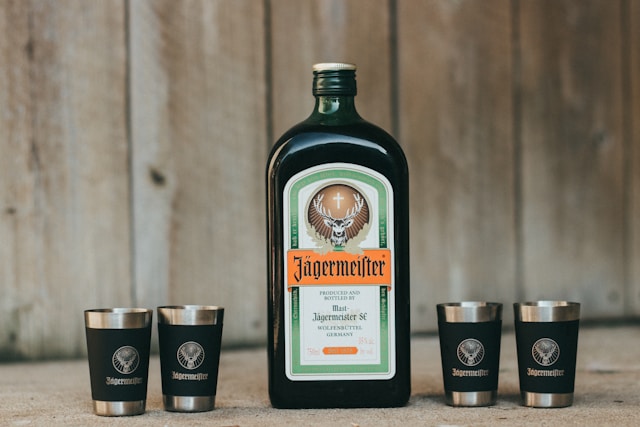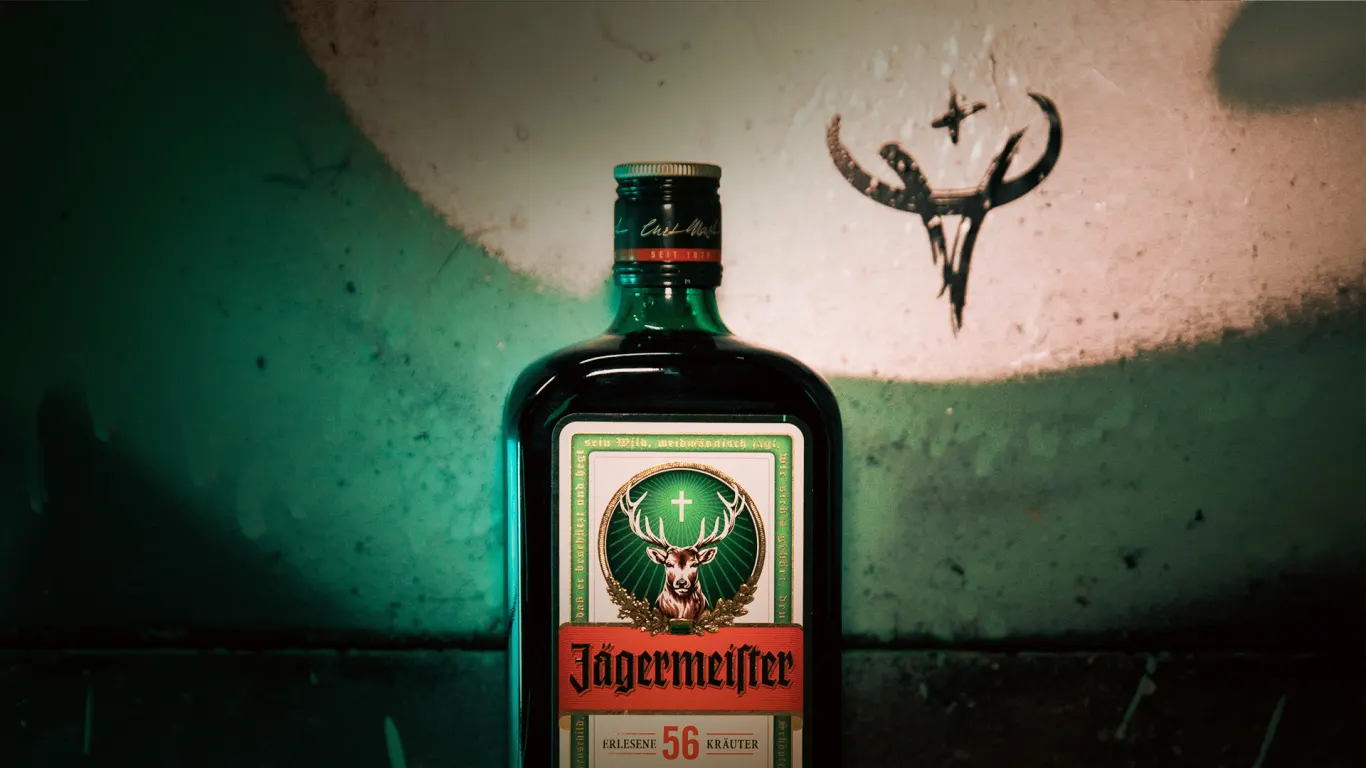
Jägermeister has been a popular drink for many years, known for its distinct taste and unique recipe. However, there is often confusion about whether Jägermeister is a whiskey or not.
This article aims to provide a clear answer to this question by examining the ingredients, production process, and alcohol content of Jägermeister.
Table of Contents
What is Jägermeister?
Jägermeister is a German herbal liqueur that is usually consumed after a meal as a digestion aid. The name “Jägermeister” translates to “master hunter” in German, and it was developed in 1934 by Wilhelm and Curt Mast. The recipe has not changed since its creation and continues to be served in its signature green glass bottle.
Origins and History
Jägermeister has a rich history and was originally created as a hunting drink. The Mast brothers were avid hunters, and they created the drink to be enjoyed after a successful hunt. The recipe was developed over several years and was finally perfected in 1934. The drink was initially marketed to hunters and was sold in small bottles that could easily fit into a hunting jacket.
Over time, Jägermeister became popular with the general public, and it is now sold in over 140 countries worldwide. The drink is often associated with partying and is a popular ingredient in many cocktails.
 photo credit: images.ctfassets.net
photo credit: images.ctfassets.net
Ingredients and Production Process
Jägermeister is made with 56 herbs and spices, and the exact recipe is a closely guarded secret. The herbs and spices are macerated in alcohol for several days to extract their flavors. The resulting liquid is then filtered and blended with water, sugar, and caramel. The final product has an alcohol content of 35% by volume.
Jägermeister is not a whiskey but a herbal liqueur. Whiskey is typically made from fermented grains and aged in oak barrels, while Jägermeister is made through maceration and the blending of botanical ingredients.
What is Whiskey?
Whiskey is a type of distilled alcoholic beverage made from fermented grains, such as barley, rye, wheat, and corn. It is typically aged in oak barrels, which gives it its distinct flavor and color. Whiskey is one of the most popular spirits in the world, and it has a rich history dating back hundreds of years.
Definition and Characteristics
Whiskey is defined as a spirit that is distilled from a fermented mash of grains and aged in oak barrels. The exact definition of whiskey can vary by country, but in general, it must be distilled to no more than 80% alcohol by volume (ABV) and bottled at no less than 40% ABV.
The process of making whiskey begins with the fermentation of grains, which produces a liquid called “wash.” The wash is then distilled in a copper pot still, which separates the alcohol from the water and other impurities. After distillation, the whiskey is placed in oak barrels to age. The length of time that whiskey is aged can vary, but most types of whiskey are aged for at least a few years. During the aging process, the whiskey takes on the flavor and color of the oak barrel.
Comparing Jägermeister and Whiskey
Flavor Profiles
.Jägermeister is a herbal liqueur made from 56 different herbs, fruits, roots, and spices. It has a complex and strong flavor, with a sweet and bitter taste and a distinct anise flavor. On the other hand, whiskey is a distilled spirit made from fermented grains, such as barley, rye, or corn, and aged in oak barrels. It has a rich, smoky, and woody flavor, with a hint of sweetness and spiciness.
Alcohol Content
Jägermeister has an alcohol content of 35% by volume, which is lower than most whiskey, which typically has an alcohol content of 40% or higher. This makes Jägermeister a milder drink than whiskey, which can be harsher on the palate.
Cultural Significance
Jägermeister is a German drink that has been around since 1934. Its name means “master hunter” in German, and it is often associated with hunting and outdoor activities. Whiskey, on the other hand, has a long history that dates back centuries, with its origins in Scotland and Ireland. It has become a symbol of national identity and cultural heritage for these countries, and is often associated with sophistication, refinement, and luxury.
Common Misconceptions
Jägermeister is often mistaken for whiskey due to its dark color and strong flavor. However, this is a common misconception since Jägermeister is not a whiskey.
One of the reasons for this misconception is that Jägermeister is often served in shot glasses, which is a common way to serve whiskey. However, Jägermeister is a digestif herbal liqueur, not a whiskey.
Another misconception is that Jägermeister is made from whiskey. However, Jägermeister is made from a blend of 56 herbs, spices, fruits, and roots, which are macerated and blended together. Whiskey, on the other hand, is typically made from fermented grains and aged in oak barrels.
It is also important to note that Jägermeister has a lower alcohol content than whiskey. Jägermeister has an alcohol content of 35% by volume, which is higher than most liqueurs but lower than typical whiskeys.
Serving and Consumption
Traditional Ways to Serve Jägermeister
Jägermeister is traditionally served as a chilled shot, straight from the freezer. It is also commonly used as a digestif after a meal. The strong, complex flavors of Jägermeister make it a popular choice for mixing with other spirits and ingredients to create unique cocktails.
In Germany, it is common to enjoy Jägermeister with a beer, known as a “Jägerbomb” or “Jägermeister bomb.” This involves dropping a shot of Jägermeister into a glass of beer and quickly drinking it.
Whiskey Serving Methods
While Jägermeister is not whiskey, it can be enjoyed in similar ways.
It can be served neat, on the rocks, or mixed into a cocktail. When serving Jägermeister neat, it is recommended to chill it beforehand to bring out the full range of flavors. For those who prefer a mixed drink, Jägermeister can be used in place of whiskey in many classic cocktails, such as an Old Fashioned or Manhattan. Its bold, herbal flavors can add a unique twist to traditional whiskey cocktails.
Regulations and Classifications
Jägermeister is a German herbal liqueur that is classified as a digestif. Digestifs are typically consumed after meals to aid in digestion. Jägermeister is made from 56 herbs and spices and has a distinctive taste that is often described as bitter and sweet. It is also known for its signature green bottle.
Whiskey, on the other hand, is a distilled spirit that is made from fermented grain mash.
There are several regulations that whiskey must adhere to in order to be classified as such. For example, in the United States, whiskey must be made from a mash of at least 51% corn, rye, wheat, barley, or malted barley. It must also be aged in new, charred oak barrels for a minimum of two years. In addition to these regulations, there are also different types of whiskey that are classified based on their production process and ingredients.
Frequently Asked Questions
What type of spirit is Jägermeister classified as?
Jägermeister is a type of herbal liqueur that is made from a blend of 56 different herbs, fruits, roots, and spices. It is not classified as a whiskey, which is a type of distilled spirit made from fermented grain mash.
How does the alcohol content of Jägermeister compare to that of whiskey?
Jägermeister has an alcohol content of 35% ABV (alcohol by volume), which is slightly lower than the alcohol content of most whiskeys. For comparison, most whiskeys have an alcohol content of around 40% ABV.
Can you describe the proper way to consume Jägermeister?
Jägermeister is typically consumed as a shot, either chilled or at room temperature. It can also be mixed with other ingredients to make cocktails.
Some people prefer to drink it with an energy drink, although this combination is not recommended due to the potential health risks.
What are the primary ingredients in Jägermeister?
Jägermeister is made from a blend of 56 different herbs, fruits, roots, and spices. Some of the most prominent ingredients include ginger, cinnamon, star anise, and citrus peel. The exact recipe is a closely guarded secret, known only to a select few people at the company.
What effects does Jägermeister have on the body when consumed?
Like all alcoholic beverages, Jägermeister can have a range of effects on the body when consumed.
In small amounts, it may cause feelings of relaxation and euphoria. However, in larger amounts, it can lead to impaired judgment, coordination, and memory.
It is important to consume Jägermeister responsibly and in moderation.
Conclusion
Jägermeister is not a whiskey but a herbal liqueur made from a blend of 56 herbs, spices, fruits, and roots.
While whiskey is typically made from fermented grains and aged in oak barrels, Jägermeister is made through maceration and the blending of botanical ingredients. Jägermeister has an alcohol content of 35% by volume, which is higher than most liqueurs but lower than typical whiskeys.
Related Posts
If you’re interested in whiskey, you might also be interested in learning the following:
- Does Whiskey Age in the Bottle? is an informative article that explains how whiskey ages and whether it continues to age once bottled.
- What Color is Bourbon? provides an in-depth look at the factors that affect bourbon’s color and how it differs from other types of whiskey.
- What is Moonshine Whiskey: A Guide to the Illicit Spirit. This article explores the origins of moonshine whiskey and how it became a popular drink in the United States.
- Can Fine Whiskey Age Overnight? answers this question and provides insight into the aging process of whiskey.
- How to Make Whiskey Taste Better: Expert Tips and Tricks offers tips for enhancing the flavor of whiskey for those who find it too strong or harsh.


